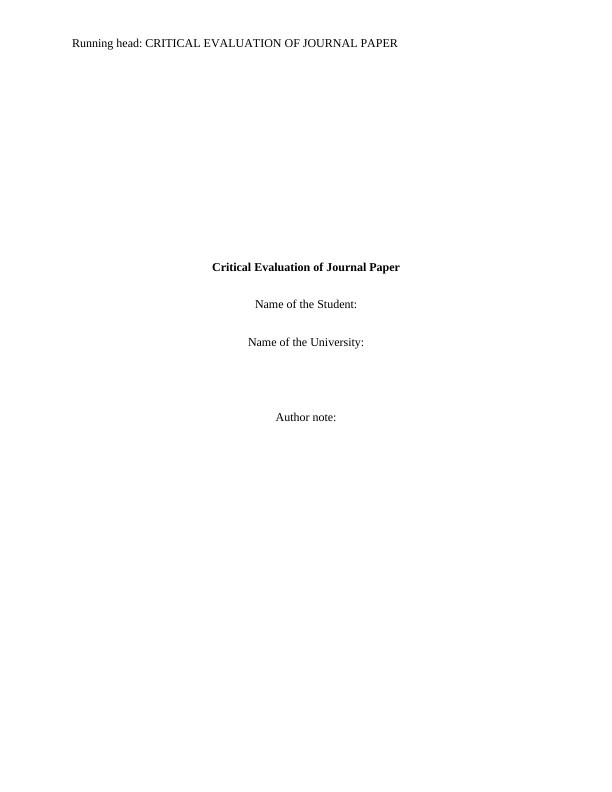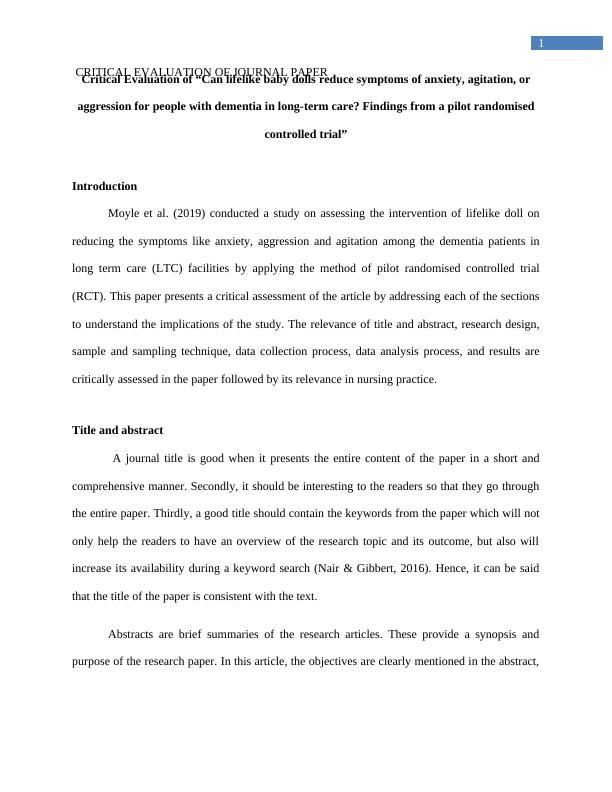Critical Evaluation of Journal Paper
10 Pages2313 Words22 Views
Added on 2022-08-17
Critical Evaluation of Journal Paper
Added on 2022-08-17
ShareRelated Documents
End of preview
Want to access all the pages? Upload your documents or become a member.
Critical Evaluation of Journal Paper: Evaluation Tool
|10
|2009
|20
Baby Doll Therapy in Dementia Patients PDF
|10
|2806
|406
Non-pharmacological interventions for agitation in dementia: systematic review of randomised controlled trials
|12
|9394
|292
Annotated Bibliography on Interventions for Dementia Patients
|8
|1581
|488
Comparing Robotic Pet Therapy and Pet Therapy for Dementia Patients
|7
|1512
|123
Concept of Dementia Disease | Report
|9
|1873
|17



